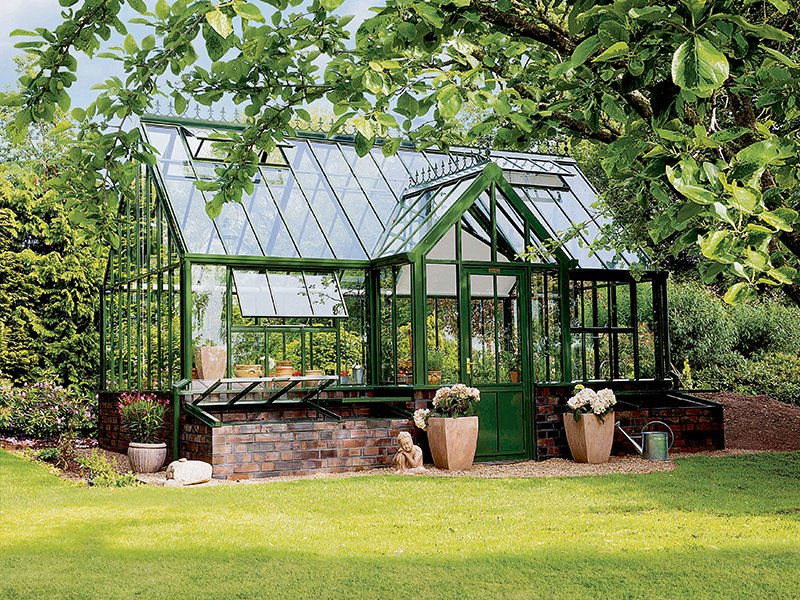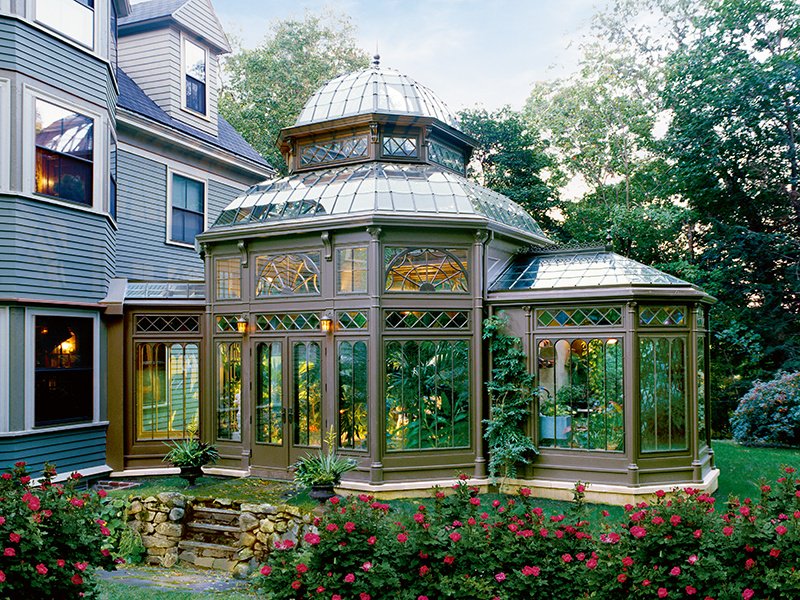How To Get More From Your Greenhouse
Take inspiration from the world’s leading chefs and horticulturalists, who are using the greenhouse renaissance to grow their own produce
Take inspiration from the world’s leading chefs and horticulturalists, who are using the greenhouse renaissance to grow their own produce
Food miles, artificial ripening, and genetic modification: three of many reasons why food lovers are turning to farmers’ markets and, increasingly, their own gardens to source their herbs, fruits, and vegetables. Even leading chefs around the globe are embracing the “locavore” movement, and sales of domestic—or hobby—greenhouses are soaring as backyard homesteading grows in popularity. Read on for design ideas and to discover how some people are making the greenhouse work for them.

1. Follow the lead of foodies
There’s something wholeheartedly satisfying about cooking and eating greenhouse-cultivated produce, and some of the world’s most successful chefs now spend as much time in their gardens as they do in the kitchen. New York-based Chef Dan Barber is synonymous with the farm-to-table movement, and at his Blue Hill at Stone Barns restaurant in Pocantico Hills, New York, the on-site farm—the Stone Barns Center for Food and Agriculture—dictates what he and his team create in the kitchen. There are no menus; instead, spontaneous multi-course tastings are steered by the day’s harvest and what is available at local markets.

At Scotland’s famous Gleneagles golf resort, Michelin-starred Andrew Fairlie has a “secret” walled garden with an original Victorian glasshouse. The space is tended by Jo Campbell, former head gardener at Raymond Blanc’s equally distinguished Belmond Le Manoir aux Quat’Saisons in Oxfordshire. Fairlie has described the garden as the most exciting thing to happen in an already illustrious career: “It has given me a new direction, and a whole new lease of life.”

Other gardening trends are also fueling the renaissance of the hobby greenhouse. “Hyperlocalism” goes beyond simply eating local produce; it also extends to growing your own indigenous plants, which may not be easily available to purchase from your nearest nursery.
2. Find a design that’s right for you
While cultural trends may evolve, greenhouses remain little changed: essentially, they’re sealed environments in which heat, light, and humidity are carefully controlled. The Romans developed greenhouses of a sort, and the use of “growing houses” has been employed all over the world ever since.

The French created the orangery in the 17th century—a glasshouse designed to over-winter tender citrus trees—and greenhouse design leaped forward in the Netherlands during the 1800s, when commercial flower growing boomed.
There’s something wholeheartedly satisfying about cooking and eating greenhouse-cultivated produce
But it was in Victorian England that the greenhouse truly came of age. The Victorians adored plant collecting, and glasshouses became a horticultural necessity as thousands of exotic new plants arrived on English soil. Eminent gardener Joseph Paxton reimagined the Victorian greenhouse by lightening the rafters and sash bars and thinning the glass, and his famous glasshouse designs revolutionized gardening forever.

Today, the Victorian-style glasshouse remains perennially popular and is a mainstay of leading greenhouse designers in both the USA and the UK. Tanglewood Conservatories in Denton, Maryland, has created bespoke greenhouses that combine complex contemporary carpentry techniques with co-owner Alan Stein’s fascination with heritage architecture.
Meanwhile, Alitex, a UK company endorsed by the National Trust and Royal Botanic Gardens, Kew, has replicated the classic Victorian timber glasshouse in hard-wearing aluminum.

“We are the only greenhouse manufacturer to use CNC [computer numerical control] machinery for precision,” explains sales director Nick Bashford. “We follow the designs of traditional Victorian structures: the height of the eaves is lower than the top of the door and is combined with a steep roof pitch, cresting, and finial detail. This provides a truly authentic appearance but also optimizes air circulation and light penetration, creating the perfect growing environment.”

3. Match it to your property
Typically, a greenhouse needs a level, sheltered site, six hours of sunlight a day, plus effective ventilation and a south-, east-, or west-facing aspect. Size depends on the space available, but most gardeners with a greenhouse ultimately wish it were larger. Alitex recommends a minimum width of around 8.5 feet. Greenhouses attached to the home are also growing in popularity, no doubt in part because they make heating, lighting, and watering infinitely easier.
At Canada’s BC Greenhouse Builders, based near Vancouver, complementing a property’s existing architecture is important. “We can help blend the greenhouse into the overall environment by changing the pitch of the roof to match a home’s roofline, for example, or by adding appropriate architectural detail such as Gothic arches,” says marketing director Angela Drake.

The company’s heavy-duty Cross Country designs are also braced to cope with extreme climates: “Our standard greenhouses can accommodate snow loads of 32lbs per square foot and wind gusts of up to 85mph, but we can also upgrade for even tougher conditions,” explains Drake. “The highest-rated greenhouses we have manufactured to date are 100lbs per square foot for snow and 140mph winds.”
We have powder-coated our greenhouses in purple, black, and even bright pink—whatever the customer wants, we can create it
Hartley Botanic is another English company whose hobby greenhouses are much valued in the USA and the UK. Operating from the same Lancashire factory since 1938, its creations are still assembled entirely by hand. Hartley’s contemporary designs, such as the Horizon, are an exciting new departure and blend beautifully with modernist architecture or pared-back garden design schemes.
4. Give it a style boost
Even the color of today’s greenhouse is undergoing something of a fashionable revolution—very few are, dare we say it, green. At Alitex, subtle tones are favored because they create a harmonious indoor–outdoor balance. “Our most popular color is Wood Sage,” Bashford says.
“It blends well and complements the heritage and architecture of most properties. But we can color-match anything, and we have powder-coated our greenhouses in purple, black, and even bright pink. Whatever the customer wants, we can create it.”
“Black is very on-trend,” agrees BC Greenhouse Builders’ Drake. “We have created greenhouses in some interesting colors over the years, too. One customer wanted a brick-red to match the trim of her home; I couldn’t really picture it but the end result was beautiful.”